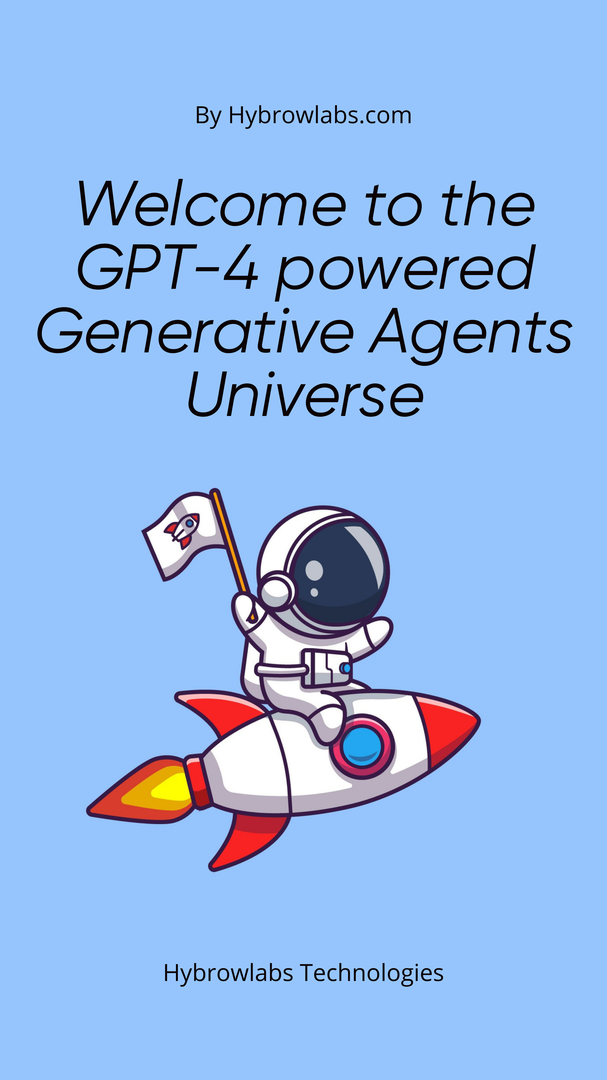
Welcome to the exciting world of generative agents, where simulations of human behavior are dynamically conditioned on agents' changing experiences & environments. In recent years, there has been significant progress in the development of generative agents, thanks to the advancements in deep learning & natural language processing. GPT-4, the latest generative language model, promises to revolutionize the field of generative agents and take it to new heights. In this blog post, we'll take a deep dive into the world of GPT-4 recreation & explore its endless possibilities. So let’s explore.
Generative agents:
Generative agents are a type of artificial intelligence agent that can produce outputs such as text, images, or audio that resemble those created by humans. These agents have the ability to generate new & unique outputs based on their understanding of the data they have been trained on. Examples of generative agents include chatbots, virtual assistants & language models such as GPT-4.
Generative agents are becoming increasingly important in the world of AI due to their potential to automate many tasks, improve communication & enhance creativity. There are two types of generative agents: rule-based & learning-based. Rule-based generative agents operate based on predefined rules & conditions, while learning-based generative agents learn from data & use machine learning algorithms to generate output.
The importance of generative agents lies in their ability to automate mundane tasks, such as answering frequently asked questions or completing simple forms, which can save time & reduce the workload of human operators. They can also enhance communication by providing faster, more personalized responses to users, which can improve user satisfaction & increase engagement.
GPT-4: The Deep Dive:
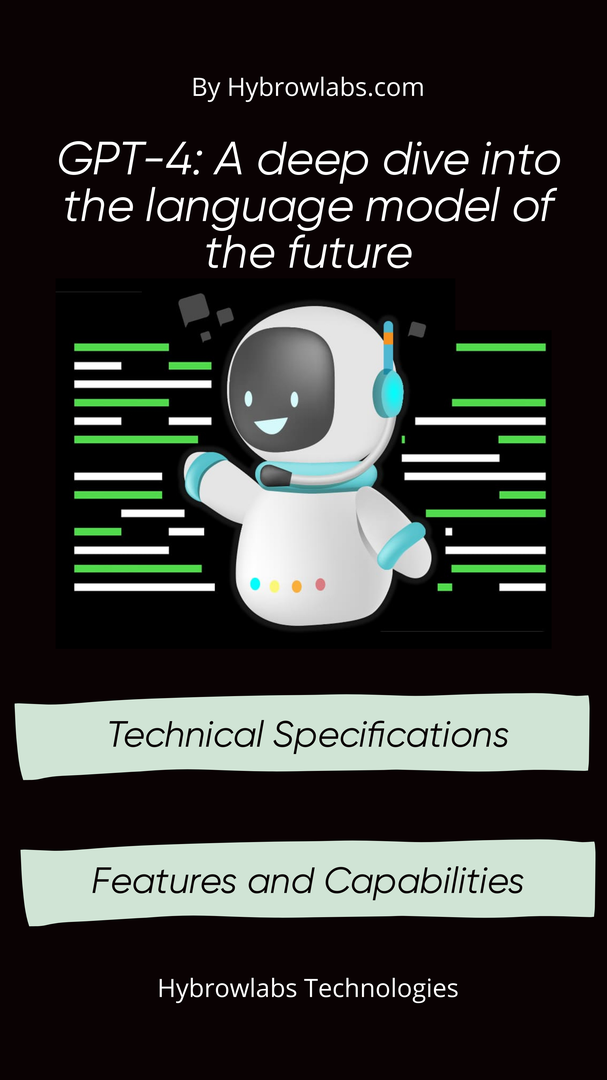
GPT-4 is the next generation of the GPT (Generative Pre-trained Transformer) language model developed by OpenAI. It is expected to be even more powerful & capable than its predecessor, GPT-3. GPT-4 is designed to generate text that is indistinguishable from human-written text, and it will have the ability to generate more coherent & contextually appropriate responses than previous models.
1. Technical Specifications:
GPT-4 is expected to have a massive neural network with trillions of parameters, making it one of the largest language models ever developed. It will likely be trained on an enormous corpus of text data, potentially including the entire internet, to enable it to generate high-quality text in a wide variety of contexts.
The model will be trained using a self-supervised learning approach, which means it will learn to generate text by analyzing patterns in large amounts of text data without being explicitly taught. This approach has been shown to be highly effective for training language models, as it enables them to learn from the vast amounts of text data available on the internet.
2. Features and Capabilities:
GPT-4 is the next-generation language model developed by OpenAI & is expected to be even more powerful than its predecessor, GPT-3. It has not been released yet, but based on the previous iterations, we can expect it to have several advanced features & capabilities. Here are some of the expected features & capabilities of GPT-4:
- Increased Language Comprehension: GPT-4 is expected to have a better understanding of the nuances of language & context. This would enable it to generate more natural & coherent language, making it even more difficult to distinguish between human-generated & machine-generated text.
- Larger Scale: GPT-4 is expected to be trained on a larger corpus of data than its predecessor, making it more powerful & capable of generating longer & more complex texts.
- Multimodal Input: GPT-4 may be able to understand & generate text in multiple languages, as well as process other forms of data such as images, videos & audio. This would enable it to generate more comprehensive & sophisticated outputs.
- Better Memory and Retention: GPT-4 is expected to have improved memory & retention capabilities, allowing it to remember previous inputs & generate more coherent & contextually appropriate outputs.
- Improved Learning and Self-Correction: GPT-4 is expected to have the ability to learn from its mistakes & self-correct, improving its accuracy & reducing the likelihood of generating incorrect or inappropriate text.
Novel Architecture of Generative Agents:
Generative agents are computer programs that can simulate human-like behavior & generate text, images, or other forms of data. These agents rely on machine learning models to generate outputs based on input data & their performance can be improved by training on larger & more diverse datasets. However, the current models suffer from the problem of catastrophic forgetting, where the model forgets previous inputs after being trained on new data. This problem limits the ability of generative agents to produce coherent & contextually appropriate outputs.
1. Explanation of Agent's Dynamic Conditioning:
The novel architecture of generative agents aims to overcome this problem by enabling the agents to dynamically condition their outputs on changing experiences and environments. This means that the agents can adapt their behavior based on their interactions with the environment & retain the memory of their previous experiences. The agents are able to dynamically condition themselves by incorporating external data sources & feedback mechanisms, such as reinforcement learning or user feedback.
2. Agent's Ability to Remember, Retrieve, Reflect, and Plan:
The architecture also allows agents to remember, retrieve, reflect & plan through dynamically evolving circumstances. This is achieved through a memory module that enables agents to retain & recall previous inputs, as well as a planning module that enables agents to generate plans & anticipate future inputs. The agents can also reflect on their past experiences & adjust their behavior based on their reflections.
3. Components of the Architecture:
The architecture consists of several components that work together to enable the agents to dynamically condition themselves & retain the memory of their previous experiences. These components include:
- Memory Module: This module enables agents to store and retrieve previous inputs & experiences.
- Planning Module: This module enables agents to generate plans and anticipate future inputs.
- Feedback Mechanisms: These mechanisms enable agents to receive feedback from users or other external sources & adjust their behavior accordingly.
- Reinforcement Learning: This technique enables agents to learn from their actions & receive rewards for making correct decisions.
4. Results from Controlled and End-to-End Evaluations:
The architecture of generative agents utilizing GPT-4 has been subjected to both controlled and end-to-end evaluations to measure its effectiveness. These evaluations aimed to establish causal effects of the importance of components of the architecture & identify breakdowns arising from improper memory retrieval. The results showed that the architecture could produce more coherent & dynamic agent behavior.
Endless Possibilities with GPT-4 Generative Agents:
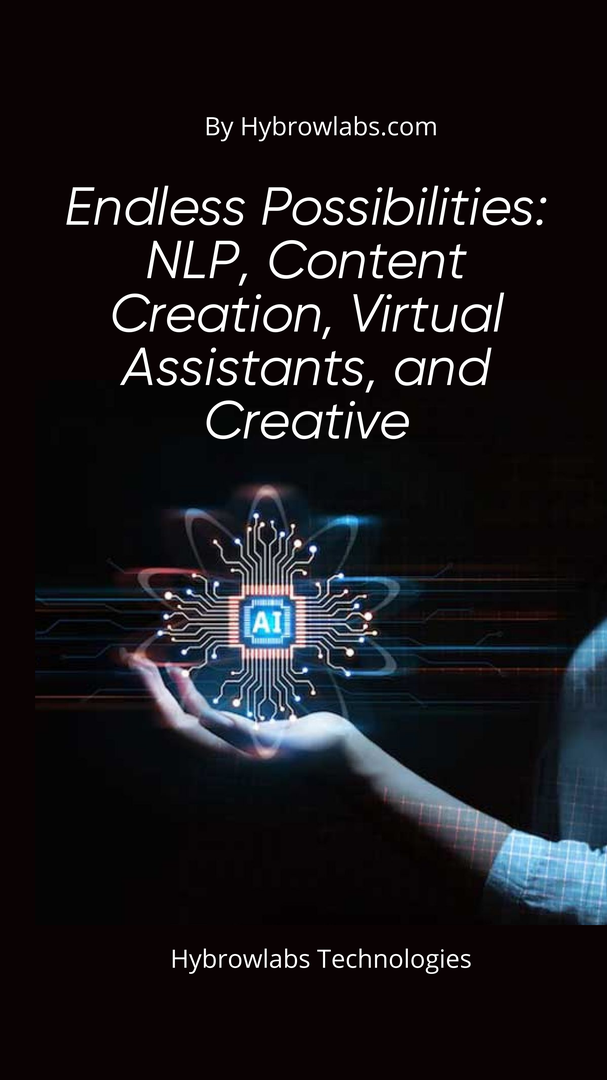
GPT-4 generative agents open up endless possibilities in various fields, including-
1. Natural Language Processing
One of the most promising applications of GPT-4 generative agents is natural language processing. The ability of GPT-4 to generate human-like text can be utilized in tasks such as machine translation, sentiment analysis & question-answering systems. This technology can also be used in applications such as chatbots & virtual assistants to provide more natural & realistic responses to user inquiries.
2. Content Creation and Curation
Another potential application of GPT-4 generative agents is in content creation & curation. These agents can be trained to generate high-quality content for various applications such as advertising, social media management & personalized recommendations. Additionally, GPT-4 can be utilized to curate content, helping to filter & sort through vast amounts of data to identify relevant information.
3. Virtual Assistants and Chatbots
GPT-4 generative agents can also be utilized as virtual assistants & chatbots. These agents can provide personalized assistance & responses to users, improving customer service interactions & enhancing the overall user experience. By leveraging the powerful natural language processing capabilities of GPT-4, virtual assistants & chatbots can interact with users in a more human-like manner.
4. Creative Writing and Storytelling
Finally, GPT-4 generative agents can be used for creative writing & storytelling. These agents can generate new & exciting stories, collaborate with human writers to enhance their work & even develop unique characters & settings. With the ability to generate coherent & dynamic narratives, GPT-4 generative agents offer new opportunities for the creative industries.
Opportunities, Ethical and Social Risks of Generative Agents:
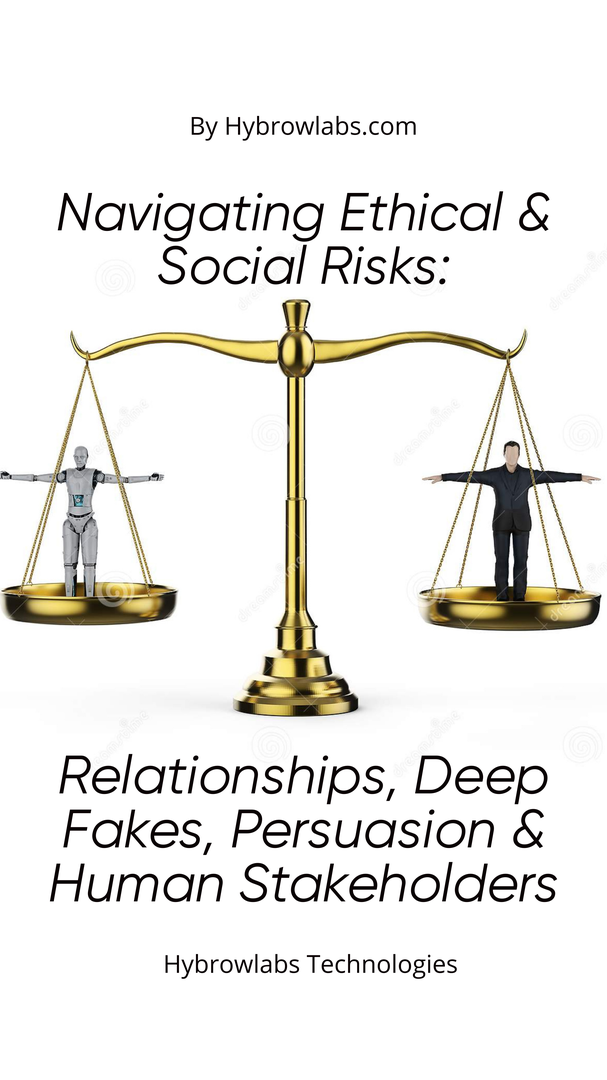
1. Mitigating the Risk of Personal Relationships:
Generative agents have the potential to simulate human behavior & engage with users in a way that resembles real human interactions. However, this can also create the risk of users forming personal relationships with the agents, leading to emotional attachment & potentially harmful consequences if the agent's behavior is not adequately regulated. To mitigate this risk, generative agents should be designed to provide clear indications of their artificial nature & avoid encouraging users to form personal relationships with them.
2. Help to Mitigate the Risk of Deep Fakes:
Generative agents can also be used to create convincing deep fakes, which can have serious ethical implications. To mitigate this risk, generative agents should be logged to ensure that any content generated can be traced back to its source. This would make it easier to identify and address any harmful or malicious use of generative agents.
3. Tailored Persuasion and Complementing Human Stakeholders:
Generative agents can also be used to tailor persuasive messages or manipulate user behavior. To mitigate this risk, generative agents should be designed with ethical considerations in mind and used in a way that complements human stakeholders in the design processes. Generative agents can be a useful tool for designers and content creators, but their use should be carefully considered and monitored to ensure that they are not being used to manipulate users.
4. Discussion on Ethical and Social Implications:
The use of generative agents raises important ethical and social implications that should be discussed and addressed. As generative agents become more advanced & capable of simulating human behavior, there is a risk that they could be used to deceive or manipulate users. It is important to consider the potential consequences of the widespread use of generative agents and develop guidelines and regulations to ensure that they are used in an ethical & responsible manner.
Advancements in GPT-4 Recreation Technology:
Recent advancements in GPT-4 Recreation technology have shown significant progress in the field of artificial intelligence. Some of the most notable advancements include:
1. Introduction of new training data and models:
One of the main advancements in GPT-4 Recreation technology is the introduction of larger & more diverse training data sets. This enables the model to learn from a wider range of inputs, leading to more accurate and diverse outputs. In addition, new models with enhanced capabilities are being developed, such as models with the ability to reason & understand the context of the input.
2. Advancements in computational power:
The availability of more powerful computers & cloud-based infrastructure has enabled GPT-4 models to train faster & more efficiently. This means that larger & more complex models can be trained in a shorter amount of time, leading to faster advancements in the field.
3. Integration with other AI technologies:
GPT-4 models are now being integrated with other AI technologies, such as computer vision & natural language processing, to create more advanced AI systems. This integration allows AI systems to learn from multiple sources & generate more accurate & comprehensive outputs.
4. Potential limitations and challenges:
Despite the significant advancements in GPT-4 Recreation technology, there are still limitations and challenges that need to be addressed. One of the main challenges is the potential for bias in the training data, which can lead to biased outputs. Additionally, there are concerns about the ethical implications of using generative agents, particularly around the potential for deep fakes & the impact on human employment.
Conclusion-
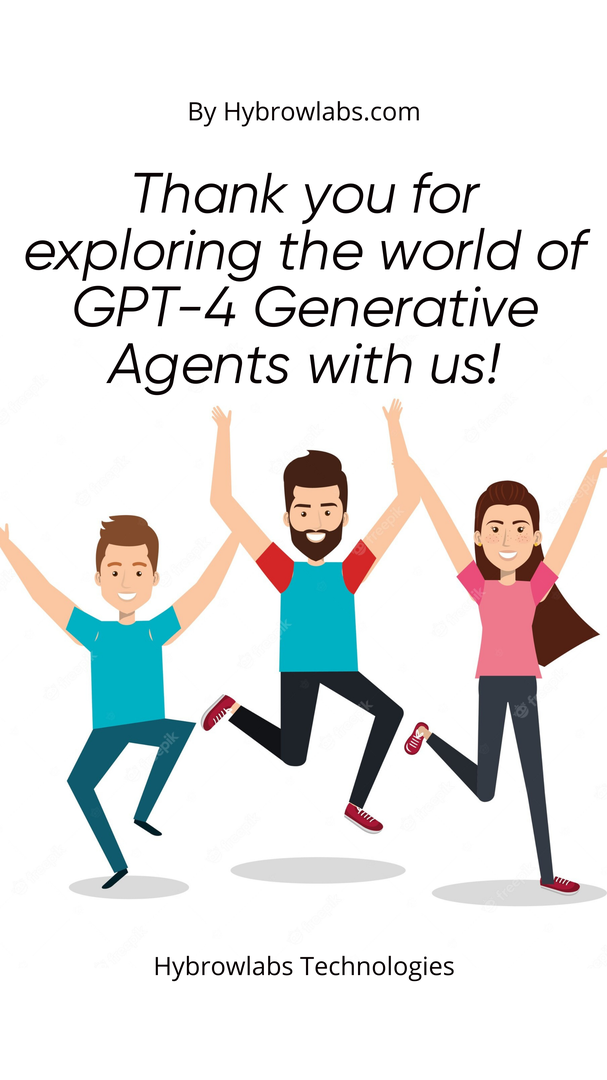
In conclusion, Generative Agents powered by GPT-4 are opening up endless possibilities in various domains, such as natural language processing, content creation, and virtual assistance. This groundbreaking technology is revolutionizing the way we interact with machines, creating new opportunities for businesses and individuals alike, including Hybrowlabs Development Services. However, these opportunities also come with ethical and social risks that need to be addressed. As we progress with Generative Agents, it is crucial that we remain mindful of the importance of mitigating risks such as forming personal relationships, deep fakes, and tailored persuasion. We must also strive to include human stakeholders in the design processes. With proper consideration and utilization, the potential of Generative Agents is truly limitless, and we eagerly anticipate where this technology will take us in the future.
FAQ-
1. What are generative agents?
Generative agents are artificial intelligence agents that can generate & create content, simulating human behavior & learning from the changing environment.
2. What is GPT-4 & how is it different from GPT-3?
GPT-4 is a hypothetical generative agent that is expected to surpass GPT-3's capabilities. While GPT-3 has 175 billion parameters, GPT-4 is anticipated to have even more, enabling it to perform more complex tasks.
3. What is the novel architecture of generative agents & how does it work?
The novel architecture of generative agents is designed to support longer-term coherence, manage dynamically evolving memory & recursively produce more generations. It leverages the powerful prompting capabilities of large language models & supplements those capabilities to create a more robust & reliable generative agent.
4. What are the possibilities of generative agents powered by GPT-4?
Generative agents powered by GPT-4 can be used for natural language processing, content creation & curation, virtual assistants & chatbots, creative writing & storytelling & much more. Its endless possibilities will enable it to cater to a vast range of industries & domains.
5. What are the ethical & social risks of generative agents?
There are ethical & social risks associated with generative agents, such as the risk of personal relationships, risk of deep fakes & tailored persuasion. It is essential to mitigate these risks & ensure that generative agents complement human stakeholders in the design process.



.jpeg)


a3dc85.jpg)

.jpg)
fd8f11.png)

.jpg)
.jpg)